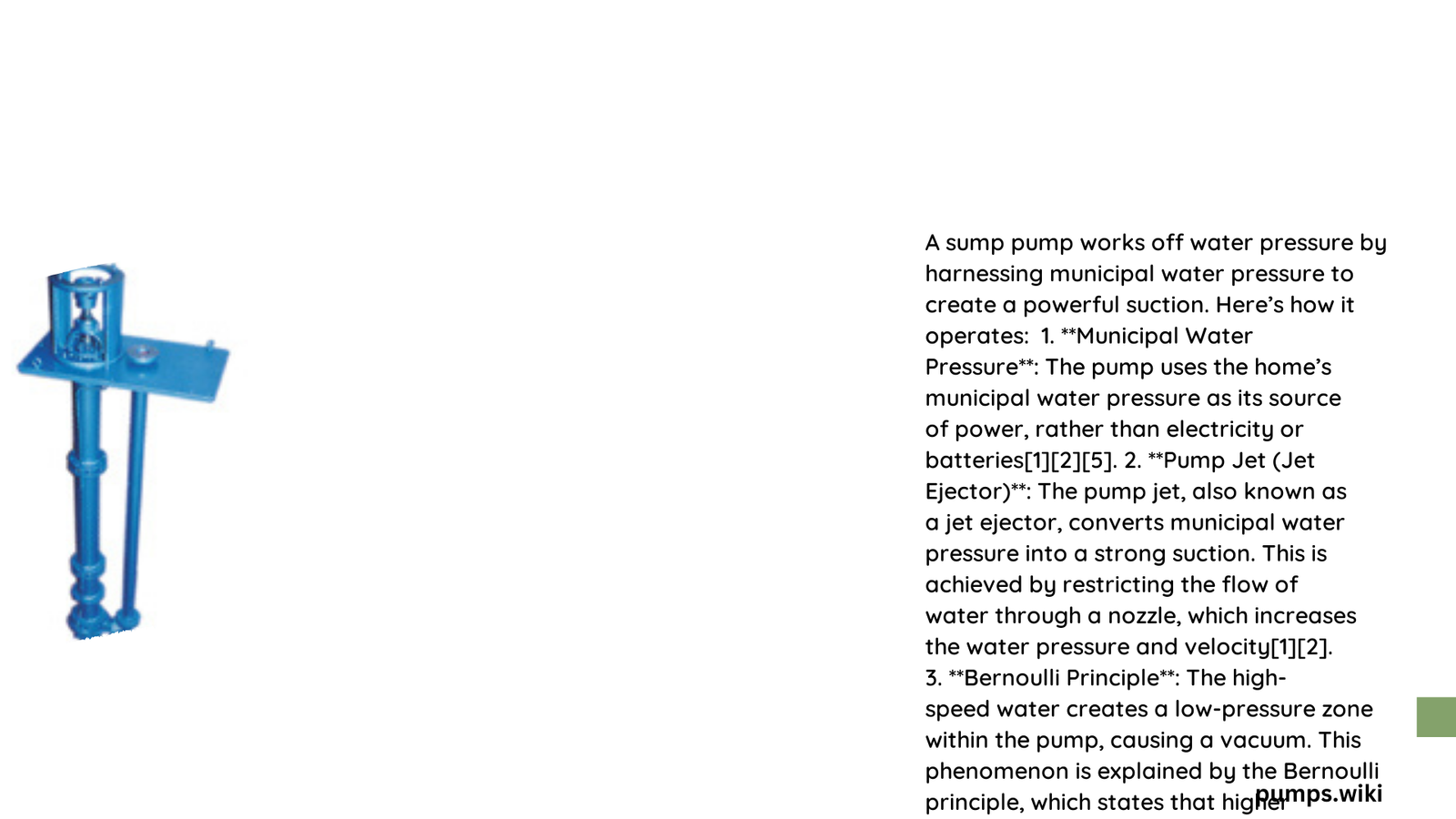Water-powered sump pumps leverage municipal water pressure to create a vacuum-driven mechanism for efficiently removing excess water from sump pits. By converting pressurized water into a powerful siphoning action, these innovative systems provide reliable basement water management without requiring electrical power, making them an essential solution for homeowners seeking robust drainage strategies.
How Does a Sump Pump Work Off Water Pressure?
What Are the Core Components of Water-Powered Sump Pumps?
Water-powered sump pumps represent an ingenious solution for basement water management, utilizing municipal water pressure to create a vacuum-driven pumping mechanism. The system comprises several critical components:
| Component | Function | Pressure Requirements |
|---|---|---|
| City Water Inlet | Connects to municipal water supply | 40-90 PSI |
| Ejector Jet/Nozzle | Converts water pressure into vacuum | Minimum 40 PSI |
| Float Switch | Activates pump when water level rises | Mechanical activation |
| Control Valve | Regulates water flow | Pressure-dependent |
How Does the Vacuum Mechanism Operate?
The water-powered sump pump’s core functionality revolves around a sophisticated vacuum generation process:
- Float Switch Activation
- Triggers when sump pit water reaches critical level
- Opens control valve to municipal water supply
-
Initiates pumping sequence
-
Pressure Conversion
- Pressurized water enters ejector jet
- Jet creates low-pressure zone
-
Generates powerful suction effect
-
Water Extraction
- Vacuum pulls water from sump pit
- Discharges water outside home
- Continuous cycle until water level drops
What Factors Influence Sump Pump Performance?
Pressure Range Considerations
Water-powered sump pumps require precise pressure conditions:
- Minimum Pressure: 40 PSI
- Maximum Pressure: 90 PSI
- Optimal Performance Range: 60-80 PSI
Flow Rate Dynamics
Flow rates vary based on multiple factors:
– Municipal water pressure
– Vertical lift distance
– Pump model specifications
Example Performance Metrics:
– Water Commander MG22: 1,800 GPH at 10-foot lift
– Water Commander MG36: 2,830 GPH at 10-foot lift
What Are Potential Operational Challenges?
Pressure-Related Limitations
- Low Pressure Issues
- Reduced pumping efficiency
- Incomplete water removal
-
Potential system malfunction
-
High Pressure Risks
- Increased component wear
- Potential system damage
- Higher operational stress
Why Choose Water-Powered Sump Pumps?
Key Advantages
- No electrical dependency
- Continuous operation during power outages
- Minimal maintenance requirements
- Environmentally friendly solution
Technical Recommendations
- Regularly check municipal water pressure
- Inspect float switch functionality
- Maintain minimum 40 PSI water pressure
- Professional annual system evaluation
Conclusion

Water-powered sump pumps offer an innovative approach to basement water management, leveraging municipal water pressure’s inherent potential. By understanding their complex mechanism, homeowners can implement a reliable, efficient drainage solution.
